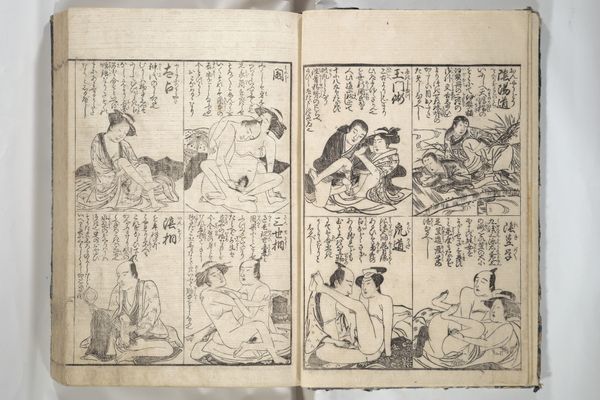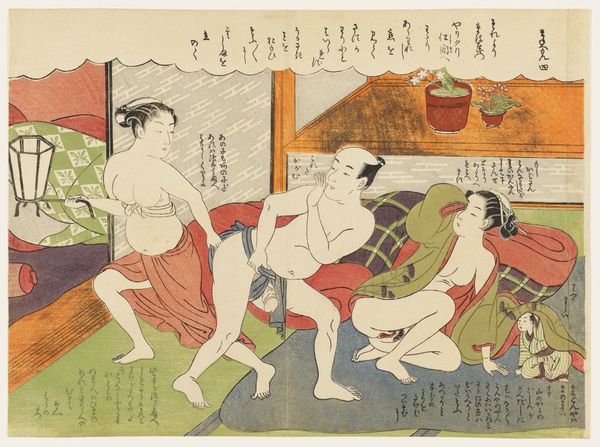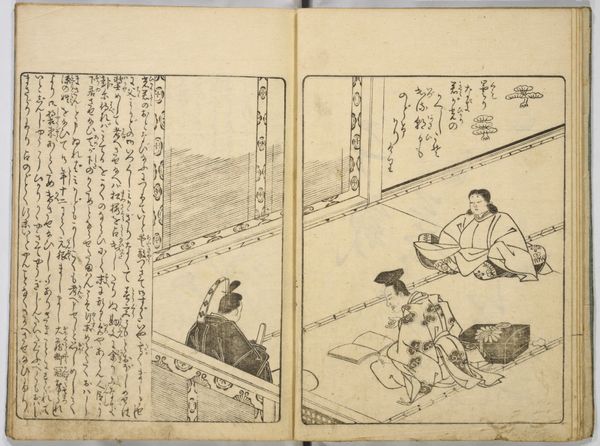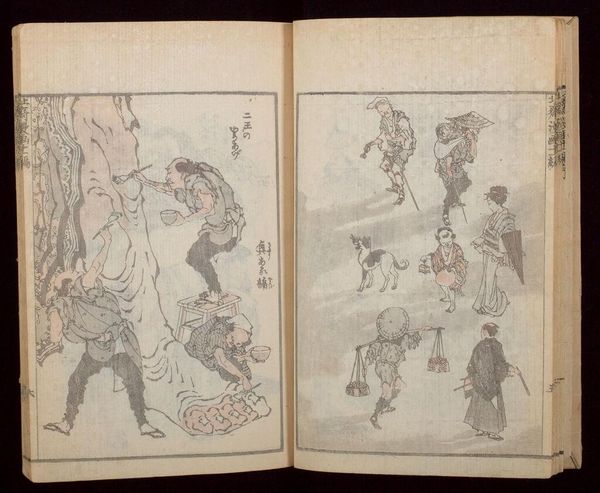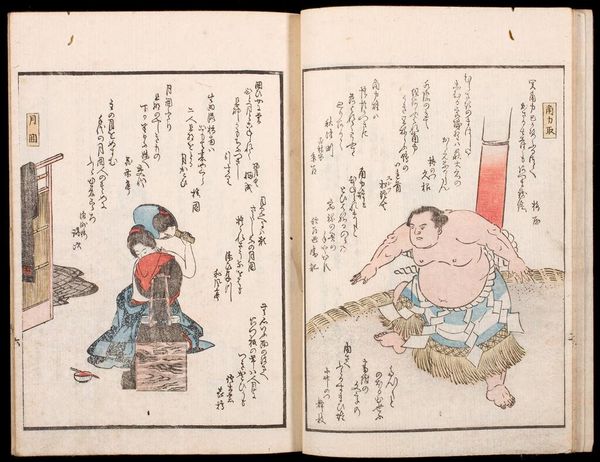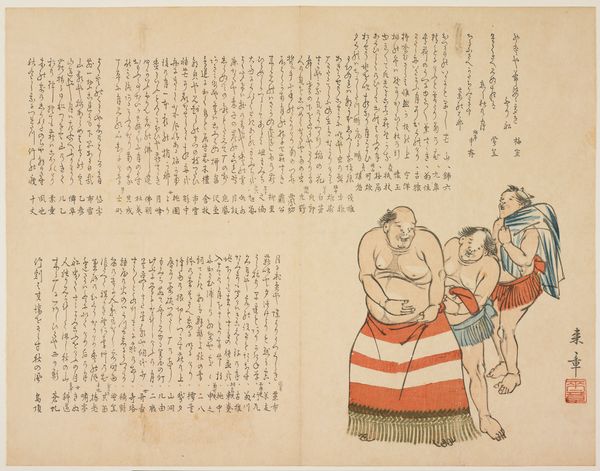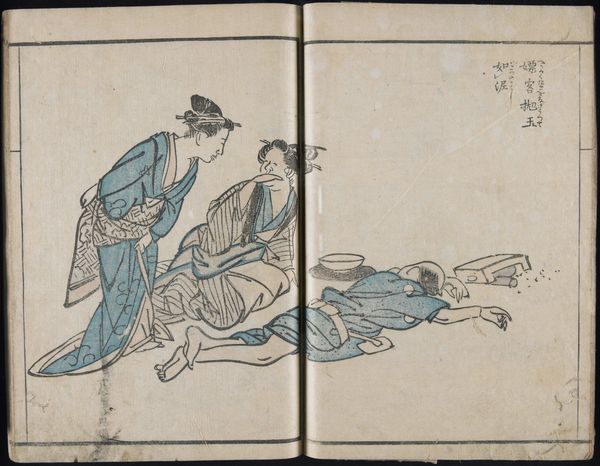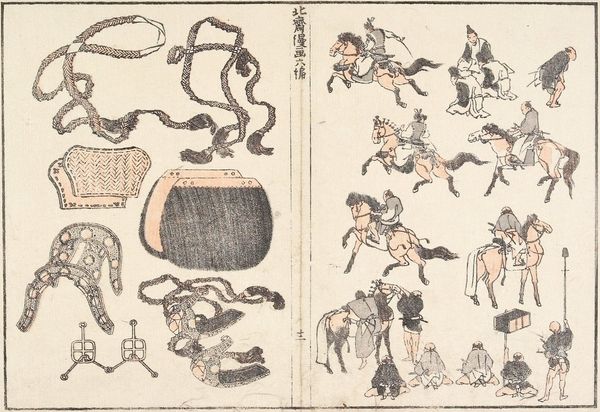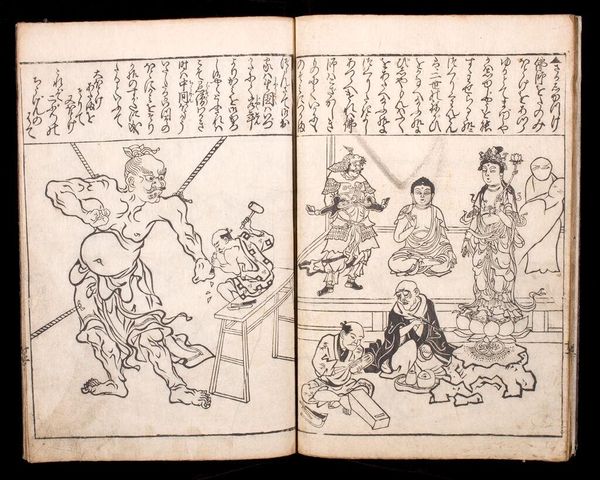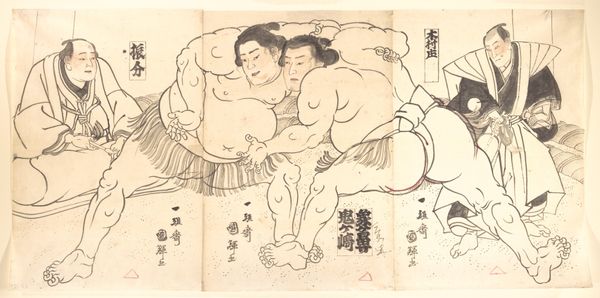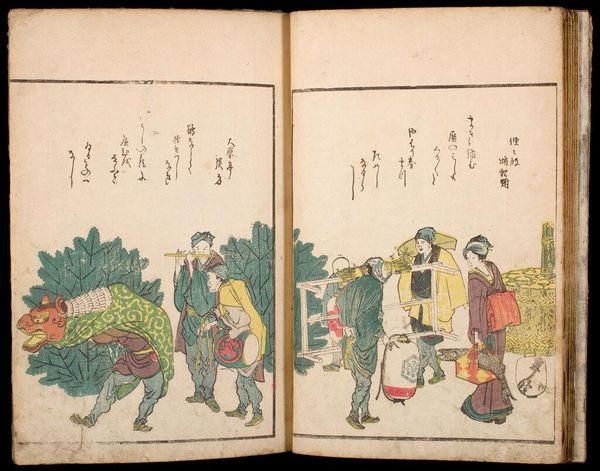
drawing, paper, ink
#
drawing
#
asian-art
#
ukiyo-e
#
figuration
#
paper
#
ink
#
genre-painting
Copyright: Public domain
Curator: Here we have a double-page spread from Hokusai's "Manga," a collection of drawings now housed in the Guimet Museum in Paris. Though undated, it offers a fascinating glimpse into early 19th-century Japanese life. Editor: What immediately strikes me is the energy of the figures. They are wrestlers, rendered with minimal lines, yet each posture conveys such dynamic force. The sumo figures, especially, feel robust and very much alive! Curator: Hokusai, best known for his woodblock prints, particularly "The Great Wave," used ink on paper for these drawings. It is really fascinating how he uses genre-painting to show social aspects in Japan. "Manga" is not, of course, manga as we understand it today; it translates more accurately as "sketches from life" or "random drawings." Editor: That makes sense given the subjects portrayed. They're caught in such immediate, active moments. We see not only physical exertion in their sparring, but I perceive elements of humor too. Hokusai captured something essential about human action and interaction in that very direct imagery. Even today they speak about Japan. Curator: It is interesting you pointed out humor. One of the goals Hokusai pursued through "Manga" was a method to teach his apprentices. He shows through visual means how to depict complex scenes of ordinary life using few strokes and basic forms. This was meant to facilitate replication for mass consumption. Editor: And did the imagery and visual symbolism became cultural reference points later on? The flowing garments, the posture of respect, the expressions... There seems a common unspoken visual grammar within all the figures represented here. I mean, even if we had no other knowledge than this single page, it delivers cultural data! Curator: Absolutely! The "Manga," while not intentionally political, circulated among the public and inevitably impacted socio-cultural trends and aesthetic tastes. Editor: Thinking about those visual shorthands, perhaps we are looking at the genesis of modern manga here, regardless of what the intention behind its production was. Curator: Maybe so! Regardless of its future reception, the work encapsulates the spirit of its era—a dynamic mix of observation, artistry, and mass media production in Japan! Editor: Indeed. This artwork leaves me wondering about all the lives—the artist, the characters in his pages, and all the future people impacted by it... all those figures, captured by a gifted mind, and fixed forever on paper.
Comments
No comments
Be the first to comment and join the conversation on the ultimate creative platform.
